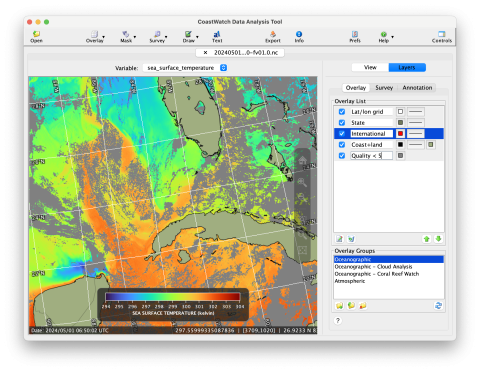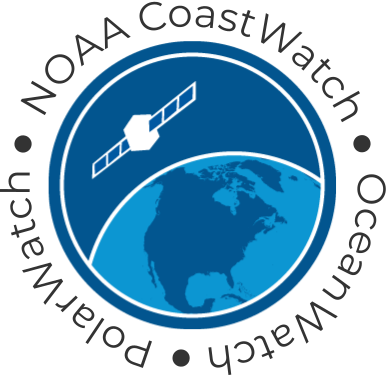Table of Contents
- Overview
- Latest Updates (Version 4.1.0)
- Source Code and Downloads
- Quick Start Guide
Overview
The CoastWatch Utilities read CoastWatch data files (NetCDF and HDF format) and contain graphical tools for interactive data viewing and command line tools for data processing. The functions include:
Information and Statistics - File contents, statistics computations on variables (for example min, max, mean, standard deviation), direct access to raw file and variable attributes.
Data Processing and Registration - Data format conversions, compositing, generic variable math, data sampling, map projection resampling.
Graphics and Visualization- Interactive visualization/analysis, batch image rendering, animation, ancillary graphics…
The software runs on Windows, Linux, and Mac OS X. The following are screenshots from the Mac version of the CoastWatch Data Analysis Tool (CDAT):
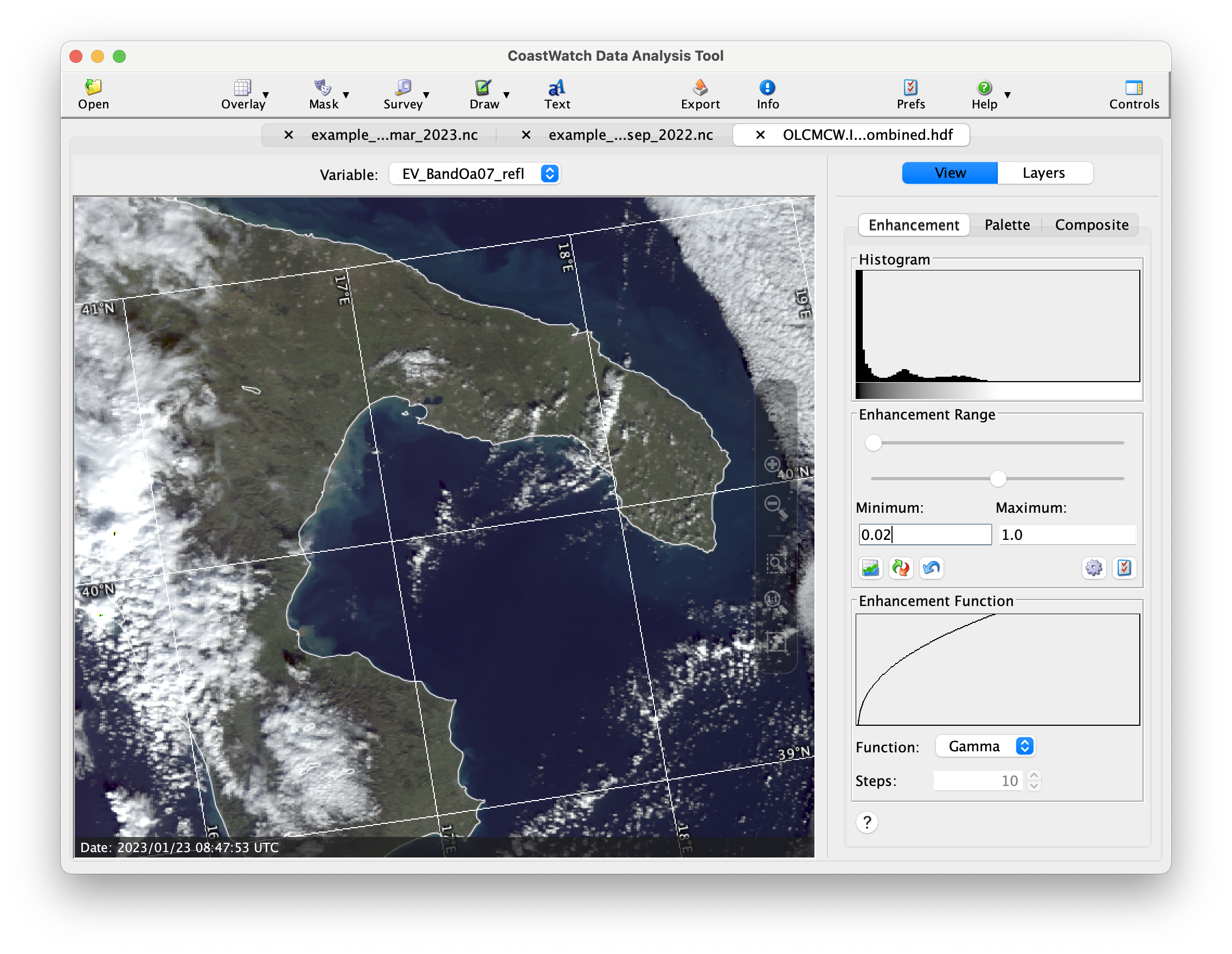 | 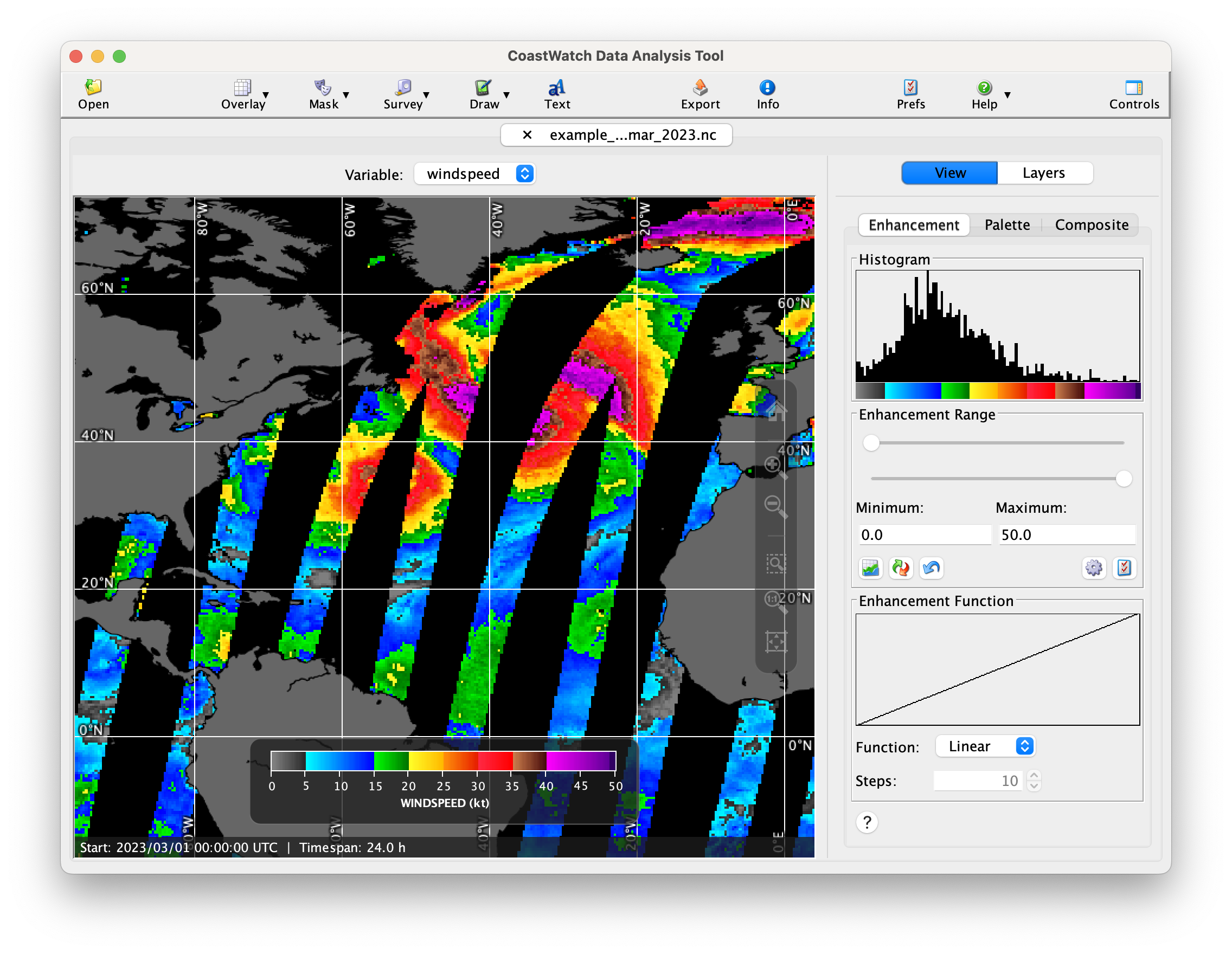 |
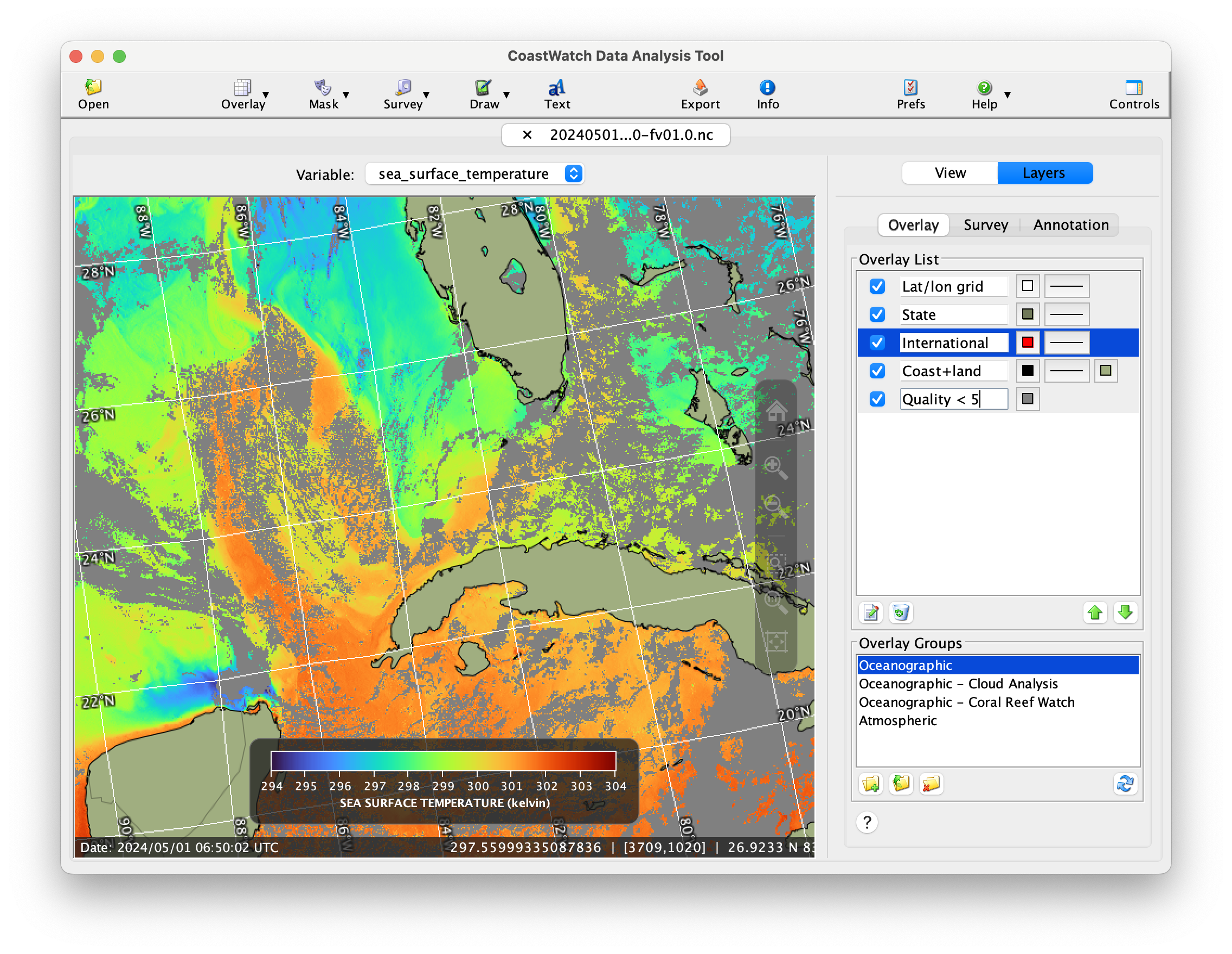 | 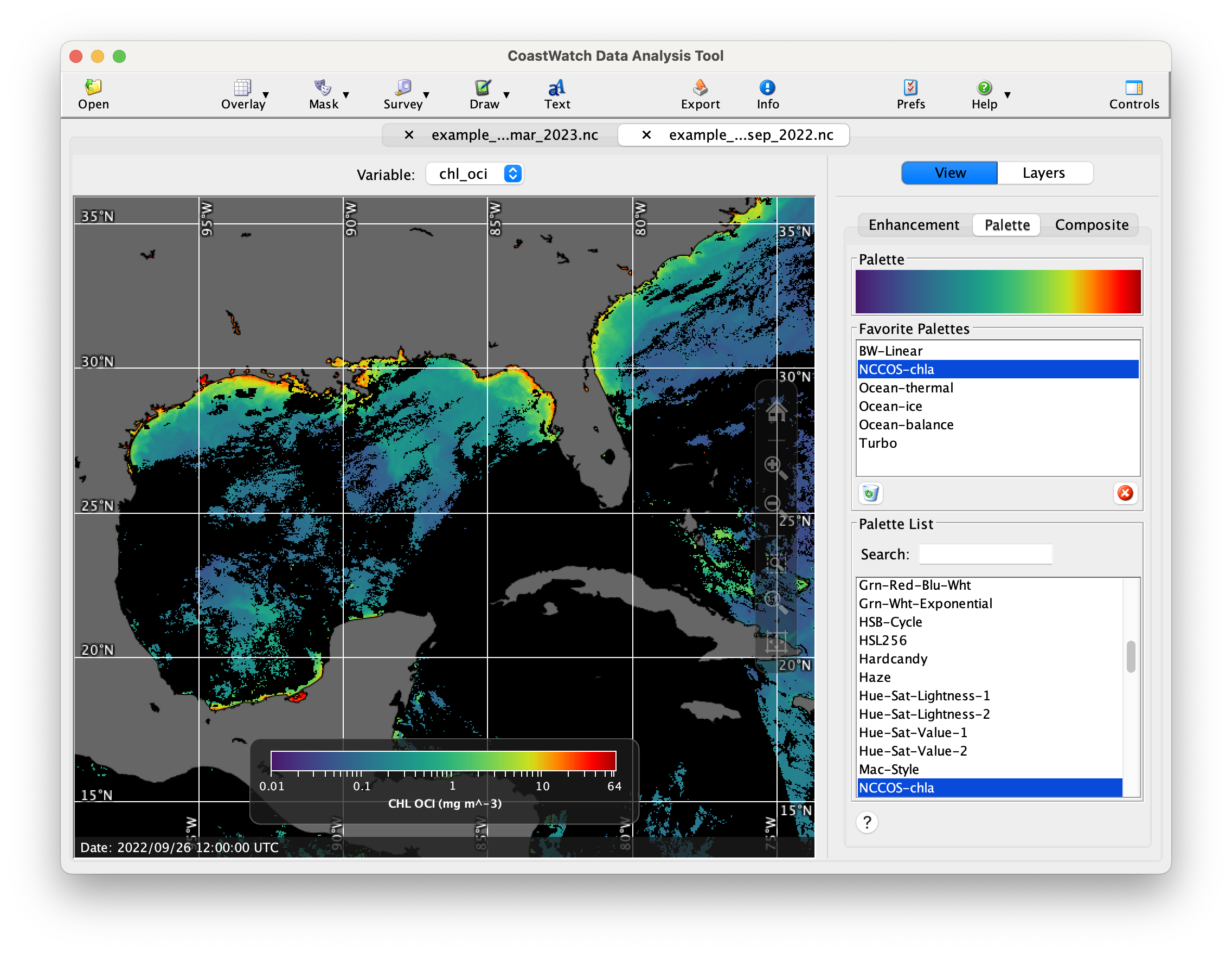 |
The following are sample animations produced by the cwanimate tool:
Latest Updates (Version 4.1.0)
- The Java VM version is now 17.0.14. The new Java VM includes a number of bug and security fixes, including a fix for an error when opening files in CDAT on Windows 11.
- The cwanimate tool has been significantly optimized for global animations, resulting in up to 20x faster operations. New support for ISO time specifications now makes specifying start and end dates easier.
- The CDAT file chooser now correctly highlights the selected file when CDAT is opened by double clicking the file in a file manager, or when the file is dragged onto the CDAT window.
- Metadata written into output images and data files is now easier to use for re-creating command line calls.
- The cwanimate tool now correctly labels the temporal axis at each time step when the step size is greater than 1.
- The PDF files written by CDAT are now smaller due to a bug fix in the PDF rendering pipeline (PDF files from the cwrender tool are unchanged).
- The color scale legend in CDAT now correctly adjusts its size when the enhancement range is changed, rather than truncating the number labels in some cases.
- CDAT now properly displays some polar stereographic data files that previously appeared mirrored.
See the User's Guide Appendix G for a full list of changes.
Source Code and Downloads
The source code is available on the CoastWatch Utilities GitHub site, and is also included in all distribution packages. Binary installation packages and supplementary data are as follows:
| Platform | Download | MD5 |
|---|---|---|
| Windows | cwutils-4_1_0_397-windows-x86_64.exe Requires that the Visual C++ Redistributable Package is installed first. | e366dd2892344fc91929e25a5e42bc69 |
| Linux | 19186cde026843bdd387d0ec03e9d616 | |
| Linux | cwutils-4_1_0_397-linux-x86_64-novm.tar.gz Requires that a Java Virtual Machine is installed first – OpenJDK 17 or higher is recommended, see https://jdk.java.net. | 3cb952da30de153fe54d6c1735473a12 |
| Mac | cwutils-4_1_0_397-macosx-x86_64.dmg | 2fb18278b688945e07f5dac81fd3e700 |
| All | etopo1.hdf Optional 1 km resolution topography data used by CDAT and cwtccorrect to be copied into <INSTALLDIR>/data/noaa/coastwatch/render | 2008818927ec2c470cb2afe6bc4af765 |
For help with installation, consult the Installation Notes section of the User's Guide. Please submit errors or bug reports to coastwatch.info@noaa.gov.
Note that the installation packages for the CoastWatch Utilities are made possible by the generous donation of a license for the install4j multi-platform installer builder by ej-technologies.
Quick Start Guide
- Download and install the package for your operating system
- Download a data file, see the Product Search Tool for datasets. For example, search for SST and download a data file from the ACSPO Global 0.02º Gridded Super-collated SST dataset (eg: via HTTP)
Go through the steps in the Unit 2 of the online course to open and view your data file. Export an image of your region of interest:
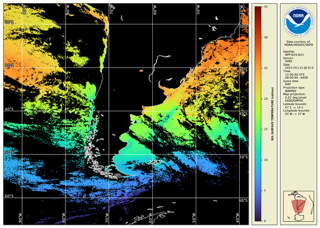
Documentation and Presentations
- Version 4.1.0 User’s Guide
- CoastWatch Utilities 2025 Updates (watch YouTube video)
- CoastWatch Utilities Online Tutorial Course
- Metadata documents:
- YouTube playlists:
Archive of previous presentations
